- Home
- Prelims
- Mains
- Current Affairs
- Study Materials
- Test Series
 EDITORIALS & ARTICLES
EDITORIALS & ARTICLES
Jan 30, 2022
MEENAKSHI LEKHI RELEASES BOOK ON UNSUNG WOMEN HEROES OF FREEDOM STRUGGLE
Recently, Union Minister of State for Culture released a pictorial book on India’s Women Unsung Heroes of Freedom Struggle as part of Azadi ka Mahotsav, in New Delhi.
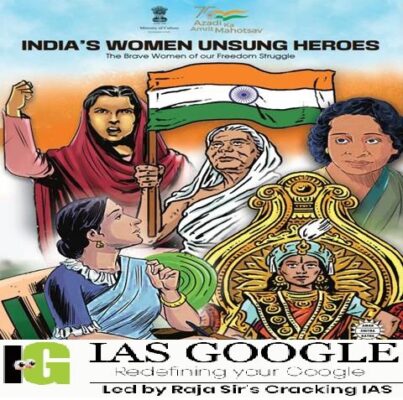 Highlights
Highlights
 Gallantry Awards
Gallantry Awards
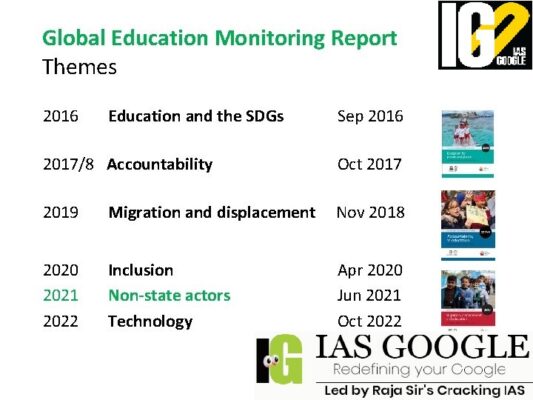 Highlights of the report:
Highlights of the report:
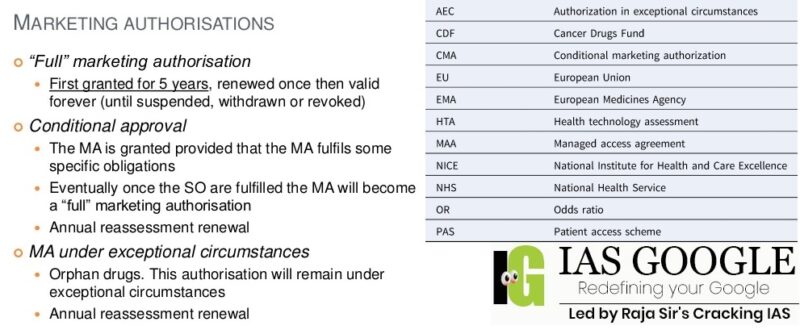 Conditional Market Authorisation (CMA)?
Conditional Market Authorisation (CMA)?
 mRNA
mRNA
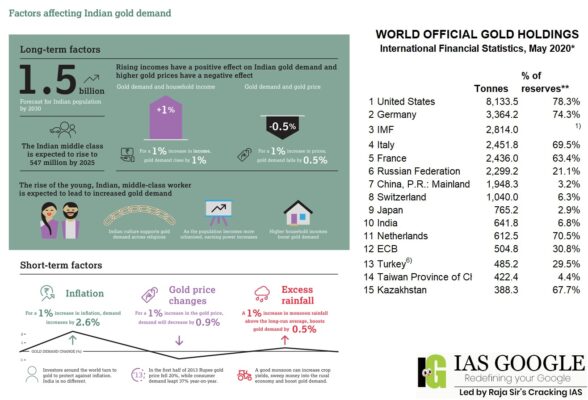 World Gold Council
World Gold Council
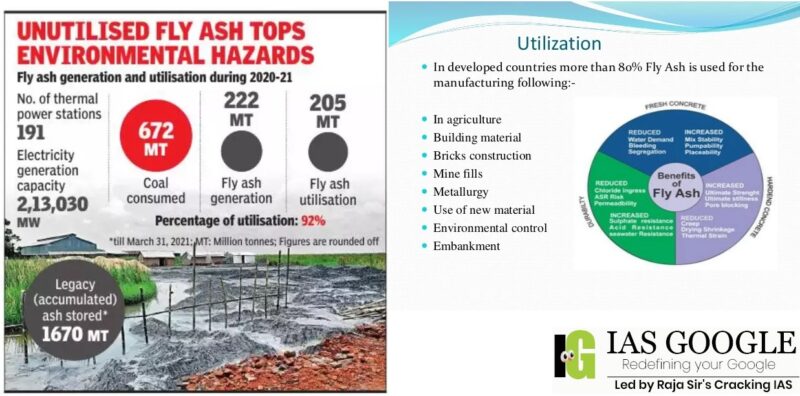 What is Fly ash?
What is Fly ash?
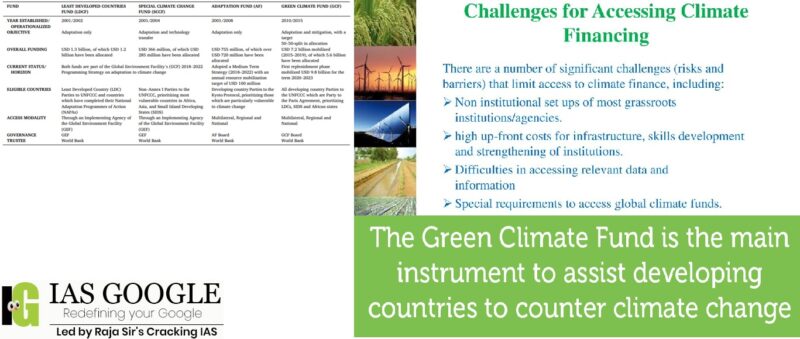 Highlights:
Highlights:
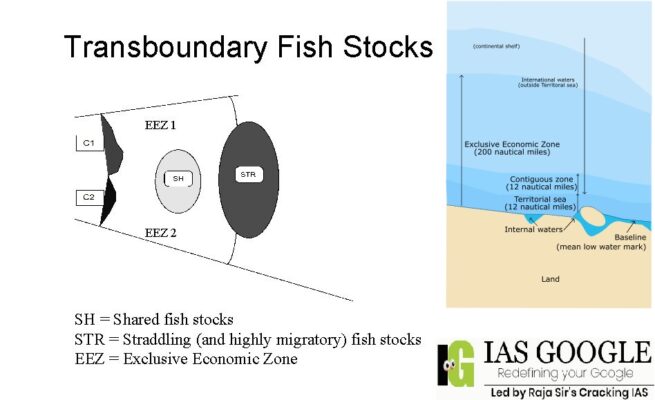 Highlights of the report
Highlights of the report
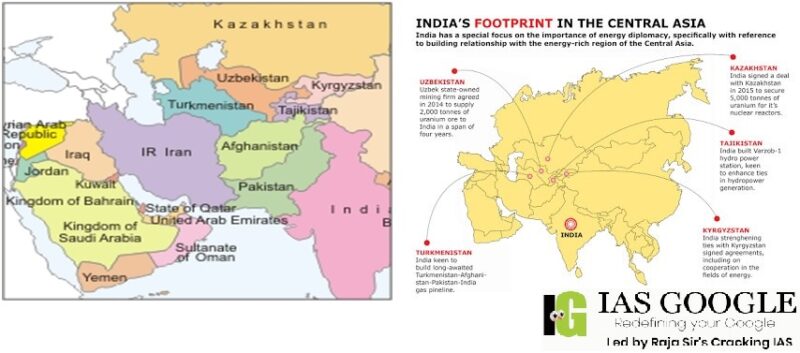 Highlights of the summit
3 goals of the summit
Highlights of the summit
3 goals of the summit
 Why did America Pull out of the pipeline deal?
Why did America Pull out of the pipeline deal?
 Lala Lajpat Rai (28 January 1865 - 17 November 1928)
Lala Lajpat Rai (28 January 1865 - 17 November 1928)
 Natural snow:
Natural snow:

 Genesis:
Genesis:
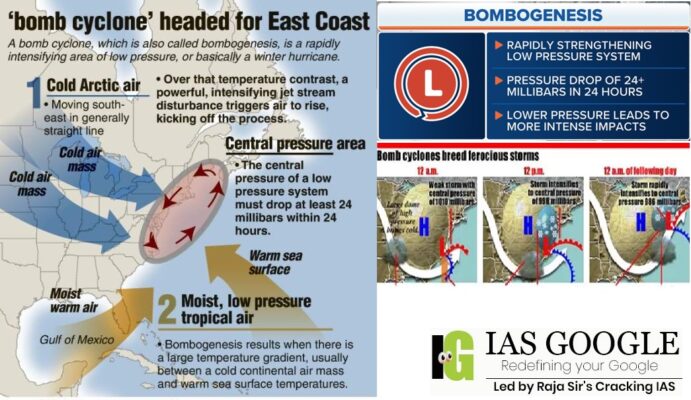 What is a bomb cyclone?
What is a bomb cyclone?
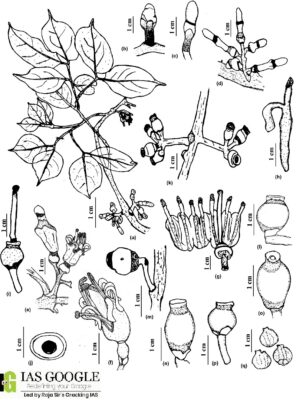
 Impact of increase in rates in USA on India:
Outflow of Foreign Capital:
Impact of increase in rates in USA on India:
Outflow of Foreign Capital:
 Genesis:
Repo (Repurchasing Option) rate and Reverse repo rate:
Genesis:
Repo (Repurchasing Option) rate and Reverse repo rate:
 Highlights
Highlights
- The book celebrates the lives of women who led the charge and lit the flame of protest and rebellion in the fight for freedom.
- It contains the stories of queens who battled colonial powers in the struggle against imperial rule and women who dedicated and even laid down their lives for the cause of the motherland.
- It has stories of Rani Abbakka, Velu Nachiyar, Bishni Devi Shah, Accamma Cherian, Parbati Giri etc.
- Shri Abdul Khader Nadakattin is a serial innovator from Karnataka.
- His innovations include a device to separate tamarind seeds, ploughing blade manufacturing machine, Seed cum fertilizer drill, Water-heating boiler, an Automatic sugarcane sowing driller, and a wheel tiller.
- Owing to his portfolio of innovations related to tamarind, people started calling him "hunase huccha", which means tamarind maniac.
- He successfully grew tamarind with alkaline water.
- He used techniques for harvesting tamarind from the tree and developed a machine for slicing tamarind.
 Gallantry Awards
Gallantry Awards
- The President of India honours the country’s military personnel for their show of gallantry and valour with a total of the following six awards.
- They are announced twice in a year on Republic Day and Independence Day.
- Param Vir Chakra
- It is India’s highest military decoration.
- It is granted for “most conspicuous bravery in the presence of the enemy” on the land, sea, or in the air.
- Mahavir Chakra
- It is second-highest military decoration in India.
- It is awarded for acts of conspicuous gallantry in the presence of the enemy, whether on land, at sea, or in the air.
- It replaced the British Distinguished Service Order.
- Vir Chakra
- It is third in precedence in wartime gallantry awards.
- It is awarded for acts of bravery on land, air, or sea.
- Ashoka Chakra
- It is India’s highest peacetime military decoration.
- It is awarded for valour, courageous action, or self-sacrifice away from the battlefield.
- This award can be given to either military or civilian personnel.
- Kirti Chakra
- It is Second in order of precedence of peacetime gallantry awards.
- It is awarded for conspicuous gallantry otherwise than in the face of the enemy.
- It may be awarded to military personnel, civilian citizens, police personnel including central para-military forces, and Railway Protection Force.
- It is Peacetime equivalent of the Maha Vir Chakra.
- Shaurya Chakra
- Shaurya Chakra is awarded for gallantry otherwise than in the face of the enemy.
- It may be awarded to military personnel, civilian citizens, police personnel including central para-military forces, and Railway Protection Force.
- It is a Peacetime equivalent of the Vir Chakra.
- It was launched on the occasion of the International Day of Education i.e. 24 January.
- GEMR tries to track the Sustainable Development Goal-4 (SDG) of ‘Quality Education’ for all by 2030.
 Highlights of the report:
Highlights of the report:
- India expects all children in primary and lower-secondary levels to be educated by 2030.
- India expects to increase enrolment in the upper secondary level to 88% from 55.8% in 2015.
- Based on 2015 data:
- Nepal is ahead of India in upper secondary education.
- India has 12.3% of secondary levels of mathematics proficiency in 2015.
- It is lower than Bangladesh (31%), Nepal (53.8%), Pakistan (68%) and Sri Lanka (50.6%).
- Indian numbers are expected to grow over six times to 75% by 2030.
- UN recommends at least 4-6% of Gross Domestic Product (GDP) or at least 15-20% of public expenditure on education by 2030.
- India expects to achieve 6% of GDP allocation to education, which is in line with New Education Policy 2020.
- National SDG report, 2021 released by NITI Aayog, says that:
- Around 71.9%of students in Class 8 have achieved at least a minimum proficiency level in language and mathematics, in terms of nationally defined learning outcomes.
- GMR expects these numbers to grow to 90% (minimum proficiency level in language) and 85% (minimum proficiency level in mathematics) in 2025.
- Nurturing innovation in the public education system for the common good.
- There is a need for a government-led inclusive approach for improving the education system.
- For quality education and equitable opportunities to learners.
- For education policy-making and implementation
- To monitor and safeguard against lobbying by investors in the education field.
- For increased finance mobilization in education
- GMR calls on all actors, state and non-state alike, to play #RightbytheRules in the field of education.
 Conditional Market Authorisation (CMA)?
Conditional Market Authorisation (CMA)?
- It is the approval of a medicine that addresses unmet medical needs of patients on the basis of less comprehensive data than normally required.
- It is kind of upgradation of emergency use authorisation (EUA) and largely represents a regulatory endorsement of the safety doses.
- Since 2021, the two vaccines have been available under Emergency Use Authorisation (EUA) - Covishield and Bharat Biotech's Covaxin.
- Through the EUA route, the vaccines are available only in emergency situations (i.e., public health emergency like the pandemic).
- Since the two vaccines now meet the high standards of safety, effectiveness, quality of the Drugs and Cosmetics Act, 1940, they have been now upgraded to conditional market authorization.
- The benefit-risk balance of the vaccine is positive.
- It is likely that the applicant will be able to provide comprehensive data post-authorization.
- The vaccine fulfills an unmet medical need.
- The benefit of the immediate availability of the vaccine to patients is greater than the risk inherent in non-availability of additional data.
- The vaccine uses the same technology as Moderna’s Covid 19 vaccine.
 mRNA
mRNA
- mRNA is the set of instructions by which cells make all proteins and send them to various parts of the body.
- It is a single-stranded molecule that carries genetic code from DNA in a cell’s nucleus to ribosomes, the cell’s protein-making machinery.
- It is a type of vaccine that uses a copy of a molecule called mRNA to produce an immune response.
- It delivers molecules of antigen-encoding mRNA into immune cells, which use the designed mRNA as a blueprint to build foreign protein.
- It works by introducing a piece of mRNA that corresponds to a viral protein.
- Using this mRNA blueprint, cells produce the viral protein.
- The immune system recognizes that the protein is foreign and produces specialized proteins called antibodies.
- Antibodies help protect the body against infection by recognizing individual viruses or other pathogens, attaching to them, and marking the pathogens for destruction.
- Once produced, antibodies remain in the body, even after the body has rid itself of the pathogen, so that the immune system can quickly respond if exposed again.
- It is a virus that attacks the body’s immune system.
- If HIV is not treated, it can lead to AIDS (acquired immunodeficiency syndrome).
- HIV infection in humans came from a type of chimpanzee in Central Africa.
- The chimpanzee version of the virus (called simian immunodeficiency virus, or SIV) was probably passed to humans when humans hunted these chimpanzees for meat and came in contact with their infected blood.
- Studies show that HIV may have jumped from chimpanzees to humans as far back as the late 1800s.
- Some people have flu-like symptoms within 2 to 4 weeks after infection (called acute HIV infection).
- Possible symptoms include Fever, Chills, Rash, Night sweats, Muscle aches, Sore throat, Fatigue, Swollen lymph nodes, and Mouth ulcers.
- People have a large amount of HIV in their blood.
- They are very contagious.
- People might have flu-like symptoms.
- This stage is also called asymptomatic HIV infection or clinical latency.
- HIV is still active but reproduces at very low levels.
- People may not have any symptoms or get sick during this phase.
- Without taking HIV medicine, this period may last a decade or longer, but some may progress faster.
- People can transmit HIV in this phase.
- This is the most severe phase of HIV infection.
- People with AIDS have such badly damaged immune systems that they get an increasing number of severe illnesses, called opportunistic infections.
- People with AIDS can have a high viral load and be very infectious.
- According to the World Health Organization (WHO), HIV continues to be a major global public health issue having claimed 36.3 million lives so far.
- India has around 21 lakh people living with HIV.
- Every year an estimated 68,000 new infections are added.
- However, HIV infection has become a manageable chronic health condition because of increasing access to effective prevention, diagnosis, treatment and care including for opportunistic infections
 World Gold Council
World Gold Council
- It is the market development organisation for the gold industry.
- Aim: to stimulate and sustain demand for gold.
- Headquarter: London, United Kingdom
- It works across all parts of the industry, from gold mining to investment.
- It is an association whose members comprise the world’s leading gold mining companies.
- The gems and jewellery industry which contributes around 7 percent of the country's gross domestic product (GDP) and 15.71 percent to India's total merchandise exports.
- It provides significant sustainable socio-economic development to India.
- It brings infrastructure investment to a region.
- India's total refining capacity is now, significantly more than the average annual gold imports.
- But much of the additional capacity remains under-utilised, largely because of the limited availability of recycled material.
- India's huge gold imports is also partially responsible for it since the second largest part of the import bill is gold.
- Gold industry is considered to play a vital role in the economy as it contributes a major chunk to the total foreign reserves of the country.
- Pledging gold as collateral has been an ever-present feature of India's gold market.
- There are two types of gold loan providers - formal (banks and non-banking finance companies) and informal (money lenders and pawnbrokers)
 What is Fly ash?
What is Fly ash?
- Fly ash is an unwanted unburnt residue of coal combustion in a coal thermal power plant.
- It is emitted along with flue gases during the burning of coal in a furnace and collected using electrostatic precipitators.
- It is hazardous for health and the environment due to the concentrated presence of heavy metals.
- increasing the life of concrete roads and structures by improving concrete durability,
- net reduction in energy use and greenhouse gas and other adverse air emissions when fly ash is used to replace or displace manufactured cement,
- reduction in amount of coal combustion products that must be disposed in landfills,
- conservation of natural resources and materials.
- The fly ash collected with the help of precipitators is converted into a wet slurry to minimise fugitive dust emissions.
- It is then transported to the scientifically designed ash ponds through slurry pipes lines.
- The ash ponds are lined with dykes to hold the slurry in place.
- Gross under-utilisation has led to the accumulation of tonnes of fly ash, causing environmental hazards.
- Unscientific handling and storage of the fly ash by coal thermal power stations.
- Reasons: hydraulic pressure induced by excessive rainfall causes ash to overflow in storage units.
- Substandard construction of ash dykes, leads to collapse of dykes, flooding nearby farms, fields and even homes with toxic ash.
- It thus pollutes soil, air, water, damage crops, and cause cardio-pulmonary illnesses.
- Objectives:
- To coordinate and monitor issues relating to the handling and disposal of fly ash and associated issues.
- To make the roadmaps and progress in fly ash utilisation available for all thermal power plants and their clusters.
- Headed by: Secretaries, of the Union Ministry of Environment, Forest & Climate Change (MoEF&CC), of the Union Ministry of Coal and Power and the chief secretaries of Uttar Pradesh and Madhya Pradesh.
- Nodal Agency: The secretary of MoEF&CC for coordination and compliance.
- To monitor scientific management and utilisation of fly ash by power projects.
- It mandates the individual thermal power plant to upload monthly information regarding ash generation and utilisation on its web portal.
- On-site and off-site crisis management plans with regard to fly ash ponds and dykes.
- There are some overlaps and distinctions in the responsibilities allocated to the committees under the Fly Ash Notification.
- The new notification has made provision for the ‘enforcement, monitoring, audit and reporting’ of the progress of fly ash utilisation and implementation of the notification by coal thermal power plants and user agencies.
- The notification holds the Central Pollution Control Board (CPCB) and State Pollution Control Boards (SPCB) / Pollution Control Committees (PCC) responsible for monitoring the effective implementation of mandates under it.
 Highlights:
Highlights:
- Countries with the highest vulnerability to climate change have missed out on finance for adaptation through the Green Climate Fund (GFC).
- As per GFC, there should be 50% investment in resources to mitigation and 50% to adaptation in grant equivalent.
- This makes 154 countries eligible for funding, of which 84 received $2.5 billion GCF adaptation funding between 2015 and 2019.
- 16 of the 37 countries most vulnerable to climate change did not receive GCF funding.
- Most of them are from the Africa region.
- Countries compete for funding by submitting proposals in adherence to certain guidelines and criteria.
- But many of the vulnerable countries suffer from “poor governance, weak institutions and a lack of financial and human capacities in their administrations”.
- Countries like Eritrea, Somalia or Yemen with weaker capacity have not been able to access funding.
- A combination of high vulnerability, poor governance and often violent conflict are major barriers are major barriers.
- Complex and competitive processes entrap vulnerable countries and deepens their conditions of poverty and poor development.
- The annual adaptation costs in developing countries reach $140 to 300 billion per year by 2030, and $280-500 billion by 2050.
- Only a fifth (20.5%) of all climate financing went to least developed countries (LDCs) in 2017-18, and 3% to small island developing states (SIDS).
- GCF was established by 194 countries of the UN Framework Convention on Climate Change in 2010.
- It allocates its resources to low-emission and climate-resilient projects and programmes in developing countries.
- Headquarters: Republic of Korea.
- Aim: To support a paradigm shift in the global response to climate change.
- Transformational planning and programming: by promoting integrated strategies, and policymaking to maximize the co-benefits between mitigation, adaptation and sustainable development.
- Catalyzing climate innovation: by investing in new technologies, business models, and practices to establish a proof of concept.
- De-risking investment to mobilize finance at scale: by using scarce public resources to improve the private finance for adaptation, nature-based solutions, least developed countries (LDCs) and small island developing states (SIDS).
- Mainstreaming climate risks and opportunities into investment decision-making to align finance with sustainable development: by promoting methodologies, standards and practices that foster new norms and values.
 Highlights of the report
Highlights of the report
- Fish stocks that move across two or more exclusive economic zones (EEZ)would be greatly impacted by climate change.
- By 2100, a total of 45 % of fish stocks are expected to shift from their historical habitats and migration paths globally and 82 % of EEZ waters would experience at least one shifting stock.
- EEZ of Latin America, the Caribbean, Melanesia and Polynesia are set to experience shifts significantly earlier as water temperatures increase.
- Countries in northern Europe and eastern Asia would experience range shifts later.
- Robust warming was observed in the seven maritime domains- Indian Ocean, South Atlantic, North Atlantic, Northwest Pacific, North Pacific, Southern oceans and the Mediterranean Sea.
- The term fish stock usually refers to a particular fish population that is more or less isolated from other stocks of the same species.
- In a particular fishery, the fish stock may be one or several species.
- Many countries that are highly dependent on fisheries for livelihood and food security would emerge as hotspots for transboundary shifts. This can lead to conflicts between countries.
- Many marine species will shift their habitat to remain within their optimal environmental niche.
- It can change the size of fish remaining, as well as how they reproduce and the speed at which they mature.
- Existing international fisheries agreements need to be assessed for their capacity to address the social–ecological implications of climate-change-driven transboundary shifts.
- Some of these agreements will need to be adjusted to limit potential conflict between the parties of interest.
- New agreements will need to be anticipatory and consider these concerns and their associated uncertainties to be resilient to global change.
- A Climate risk hotspot for transboundary fisheries management should be made.
- There is need to Identify range shifts in the shared distribution of transboundary stocks.
- It is prescribed by the 1982 United Nations Convention on the Law of the Sea.
- It is an area of the sea in which a sovereign state has special rights regarding the exploration and use of marine resources, including energy production from water and wind.
- It stretches from the baseline out to 200 nautical miles (nm) from the coast of the state.
- It is also referred to as a maritime continental margin.
- The term does not include either the territorial sea or the continental shelf beyond the 200 nautical mile limit.
 Highlights of the summit
3 goals of the summit
Highlights of the summit
3 goals of the summit
- The mutual cooperation between India and central Asia was necessary for regional security and prosperity.
- Establishment of a platform for regular interaction among all stakeholders.
- Prepare an ambitious roadmap for the cooperation between India and Central Asian countries.
- Joint Working Groups at senior official level on Afghanistan: The leaders discussed concerns over Afghanistan such as regarding:
- need for immediate humanitarian assistance
- ensuring the formation of a truly representative and inclusive government
- combating terrorism and drug trafficking
- preserving the rights of women children and minorities
- The use of Chabahar Port
- It discussed the possibilities of increasing Indian trade with the region using Iranian ports including the Chabahar port terminal managed by Indian and the International North South Transport Corridor (INSTC).
- Round-Table on Energy and Connectivity:
- It stressed on the importance of TAPI gas pipeline project that runs from Turkmenistan’s oil fields through Afghanistan and Pakistan to India.
- The Tapi Project has issues relating India-Pakistan tensions and the situation in Afghanistan.
- Showcasing of Buddhist exhibitions in Central Asian countries
- Commissioning of an India-Central Asia dictionary of common words
- Joint counter-terrorism exercises
- Visit of 100-member youth delegation annually from Central Asian countries to India and special courses for Central Asian diplomats.
- Afghanistan: India conveyed the continuance of humanitarian assistance to the Afghan people.
- Kazakhstan: Kazakhstan has become a vital partner for India’s energy security.
- Uzbekistan: India stressed the growing cooperation between Indian states and Uzbekistan.
- Kyrgyzstan: India shares an active partnership with Kyrgyzstan in the field of education and high-altitude research.
- Tajikistan: India has a longstanding cooperation in the field of security with Tajikistan.
- Turkmenistan is an important part of Indian vision in the field of regional connectivity, which is evident from participation in the Ashgabat Agreement.
- Ashgabat Agreement envisages facilitation of transit and transportation of goods between Central Asia and the Persian Gulf.
 Why did America Pull out of the pipeline deal?
Why did America Pull out of the pipeline deal?
- The US State department announced it no longer supported East Mediterranean (EastMed) natural gas pipeline on grounds of financial viability, environmental concerns and political tensions.
- The pipeline plan was vulnerable to many vagaries of technology, engineering and Turkish belligerence.
- Turkey is a member of North Atlantic Treaty Organization (NATO) and it is always at war with Cyprus.
- Viewing Turkey under the influence NATO and as a gateway to Black Sea, the US pulled out from EastMed.
- The Eastern Mediterranean pipeline or simply EastMed is a planned offshore/onshore natural gas pipeline.
- Location: It directly connects East Mediterranean energy resources to mainland Greece via Cyprus and Crete.
- Significance: The project, currently in design, will transport natural gas from the off-shore gas reserves in the Levantine Basin into Greece.
- The Energy Triangle of Greece, Cyprus, and Israel signed an intergovernmental agreement for the EastMed gas pipeline in Tel Aviv in 2019.
- The agreement had support from the USA.
- American interest on the pipeline is explained by US's demand that its European partners maintain a diversification policy of their energy imports and lessen dependence on Russian Natural Gas.
 Lala Lajpat Rai (28 January 1865 - 17 November 1928)
Lala Lajpat Rai (28 January 1865 - 17 November 1928)
- He was a veteran leader of the Indian Nationalist Movement.
- He was popularly known as Punjab Kesari.
- He was the prime protestor of Simon's commission headed by Sir John Simon to report on the political situation in India.
- He had his initial education in Government Higher Secondary School, Rewari, Punjab province.
- In 1880, Lajpat Rai joined Government College at Lahore to study law.
- In 1892, he moved to Lahore to practice law before the Lahore High Court.
- Early in life, he became a follower of Dayanand Saraswati, the founder of the Arya Samaj, and went on to become one of the society’s leaders.
- He was also the founder of organizations like Hisar Arya Samaj, Hisar Bar Council, National DAV managing Committee.
- In 1885, he established the Dayanand Anglo-Vedic School in Lahore.
- He founded the Indian Home Rule League of America in New York City in 1917.
- Rai, Tilak, and Bipin Chandra Pal (called Lal-Bal-Pal) advocated the use of Swadeshi goods and mass agitation in the aftermath of the controversial Partition of Bengal in 1905 by Lord Curzon.
- After Lajpat Rai along with Ajit Singh resisted the Punjab Colonisation Bill in 1907, colonial authorities deported Rai to Mandalay in Myanmar without trial. But due to lack of evidence I was allowed to return the same year.
- He was elected President of the Kolkata Indian National Congress Session (1920), which saw the launch of Mahatma Gandhi’s Non-cooperation Movement.
- In the same year, representatives of trade unions established the All-India Trade Union Congress (AITUC) under the Chairmanship of Lala Lajpat Rai.
- In 1924, he openly advocated the partition of Punjab into Hindu and Muslim Provinces.
- He stressed the need for unity in the Hindu society.
- That is why he was actively associated with the Hindu Mahasabha, which had leaders like Madan Mohan Malaviya.
- He sought socio-cultural resurgence through Hindi and Nagri script text-books on India’s indigenous cultural heritage and protests against the British government’s favoritism to non-Hindus.
- He crusaded for an end to untouchability.
- He wrote extensively in English and Urdu.
- His important works include: ‘The Arya Samaj’, ‘Young India’, ‘England’s Debt to India’, ‘Evolution of Japan’, ‘India’s Will to Freedom’, ‘Message of the Bhagwad Gita’, ‘Political Future of India’, ‘Problem of National Education in India’, ‘The Depressed Glasses’, and the travelogue ‘United States of America etc.
- Due to the reduction in natural snowfall, the usage of artificial snow is prevalent.
- In the 2014 Sochi Olympics, Russia had used 80% of artificial snow.
 Natural snow:
Natural snow:
- Atmospheric water vapor gets frozen into ice crystals and starts falling. This phenomenon is termed as snowfall and the precipitated item is termed as snow.
- When Snow is injected with water to harden it and then treated with chemicals to keep the hardened snow in place, it is known as artificial snow or Fake Snow.
- It is made of a polyacrylate polymer, like sodium polyacrylate, which is shredded to produce flakes of a similar size and color to real snow.
- Sodium polyacrylate:
- It is a superabsorbent polymer, also known as a
- It can absorb up to 800 times its weight in water.
- It is an ideal material for producing artificial snow.
- Safe and non-toxic and can be used in decorations, sports, etc.
- Can be used in snow guns to control air pollution.
- For the sportsperson, fake snow surface provides speed and stability.
- Fake snow creates harder and faster slopes. This increases the risk of athletes falling and hurting.
- Artificial snow can create ice layers on plants and damage them. This is why it is non-eco-friendly.
- Mostly, waste or untreated water is used for making snow. It has raised concerns about left-over chemicals and other contaminants in waste water.
- Artificial snow demands a huge amount of water. This concerns areas where there is scarcity of water in winter.

- Nordic clinker boats are small, open, wooden boats between five and ten meters long.
- The term “clinker” is thought to refer to the way the boat’s wooden boards were fastened together.
- Wooden clinker boats are characterized by the use of overlapping longitudinal wooden hull planks that are sewn or riveted together.
- For almost two millennia, the people of the Nordic region (Finland, Norway and Sweden) have been building clinker boats
- Aim: To share Key Performance Indicators related to the Coal Sector.
- The portal will have the key performance indicators related to Coal Production, Status of Coal Stock in Thermal Power Plants, Allocation of Blocks, Monitoring of Major Coal Mines and Coal Price.
- Aim: To disseminate the information about all the NIPERs and their research activities, patents filed and Publication information at one place so that industry and other stakeholders know about them.
- The National Institute of Pharmaceutical Education and Research, Hyderabad is an Indian public pharmaceutical research university.
- It is one of the seven schools under India's Ministry of Chemicals and Fertilizers.
- The institute offers Masters and Doctoral degrees in pharmaceutical sciences.
- As an Institute of National Importance, it plays a major role in human resource development for the Indian pharmaceutical industry.
 Genesis:
Genesis:
- The appellant challenged an order of externment passed under Maharashtra Police Act, which had been upheld by the Bombay High Court.
- The word ‘extern’ is derived from the Latin root ‘externus’, meaning outward.
- It is a method of controlling crime, where unwanted elements are banished from a certain geographical area.
- Police and governments have long used externment as a method of ‘peacekeeping.’
- An order of externment passed under provisions of Section 56 of the Maharashtra Police 1951 Act imposes a restraint on the person, from entering a particular area.
- The Act allows for the government to take preventive measures to detain or extern those members of society whom they deem to potentially pose a threat or could cause a disturbance to the peace of society.
- Order of externment infringes the fundamental right guaranteed under Article 19(1)(d).
- It is against the right to livelihood.
- It prevents the person from staying in his own house along with his family members during the period the order is in force.
- It should not exceed two years and that too only after due application of mind by the competent authority.
- It provides citizens a fundamental right to move freely throughout the territory of India.
- It guarantees to its citizens the right to go wherever they like in Indian territory without any kind of restriction whatsoever.
- They can move not merely from one State to another but from one place to another within the same State.
- In the interests of the general public
- For the protection of the interest of Scheduled Tribes
- It cannot lay down any yardstick for determining inadequacy of their “representation” in public employment.
- In the past, it had refused to lay down any yardstick and had left it to states to determine the factors relevant for deciding adequate representation.
- It said before providing for reservation in promotions to a cadre, the State is obligated to collect quantifiable data regarding inadequacy of representation of SCs and STs.
- It held that “cadre” should be the unit for the purpose of collection of quantifiable data in relation to promotional posts.
- The exercise of collection of information cannot be with reference to the entire service or ‘class’/’group’, but it should be relatable to the grade/category of post to which promotion is sought.
- It said that there should be review of the data collected and period of review should be “reasonable”.
- Supreme court upheld the validity of the 2018 Reservation Act that introduced consequential seniority for SC/STs in Karnataka public employment.
- It held that the conclusion of the court approving the collection of data on the basis of groups and not cadres is contrary to the law laid down in Nagaraj and Jarnail Singh judgments.
- SC upheld the government order, being of the opinion that caste was an acceptable indicator of backwardness.
- It said Article 16(4) of the Constitution of India does not provide for reservation in the matter of promotions.
- It also stated that 27% central government reservation for OBCs is valid.
- SC upheld the Constitutional amendments by which Articles 16 (4A) and 16 (4B) were inserted, saying they flow from Article 16 (4) and do not alter its structure.
- Article 16 (4A) empowers the State to make provisions for reservation in matters of promotion to SC/ST employees if it feels they are not adequately represented in services, and
- Article 16 (4B) enables the State to carry forward the unfilled SC/ST quota of a particular year without clubbing it with the regular vacancies of the year to which it is carried forward to.
- It laid down three conditions for promotion of SCs and STs in public employment.
- Backwardness
- Inadequate representation
- Maintenance of administrative efficiency.
- It modified the Nagaraj judgment to the extent and stated that:
- States need not to produce quantifiable data to prove the “backwardness” of a Scheduled Caste/Scheduled Tribe community in order to provide quota in promotion in public employment.
- Launched in: January 2022.
- Aim: Providing assistance for common technology development and services infrastructure.
- Objective: To expand and enlarge the impact created by Phase I pilot scheme, thereby providing greater impetus through creation of a globally competitive capital goods sector.
- Launched by: Ministry of Heavy Industries
- Aim: To address technological obsolescence, limited access to quality industrial infrastructure and common facilities.
- To encourage technology development through joint participation with academia, industry R&D institute and government.
- To create common physical infrastructure for enhancing the competitiveness of the local industry.
- Identification of technologies through technology innovation portals.
- Setting up of four new Advanced Centres of Excellence and augmentation of existing centers.
- Promotion of skilling in capital goods sector.
- Setting up of four Common Engineering Facility Centre's and augmentation of existing centres.
- Augmenting existing Testing and Certification Centres.
- Setting up of 10 industry accelerators for technology development.
 What is a bomb cyclone?
What is a bomb cyclone?
- A bomb cyclone, which occurs through the process known as bombogenesis, is a winter hurricane.
- The word "bombogenesis" is a combination of cyclogenesis, which describes the formation of a cyclone or storm, and bomb.
- This can happen when a cold air mass collides with a warm air mass,such as air over warm ocean waters.
- A bomb cyclone occurs when a mid-latitude cyclone rapidly intensifies, or quickly drops in atmospheric pressure, marking the strengthening of the storm.
- These cyclones form when air near Earth’s surface rises quickly in the atmosphere, triggering a sudden drop in barometric pressure— at least 24 millibars within 24 hours.
- Bomb cyclones have cold air and fronts: Cold air rapidly weakens hurricanes, while it is an essential ingredient for bomb cyclones.
- Bomb cyclones form during winter: Hurricanes form from late spring to early fall, while bomb cyclones form from late fall to early spring.
- Bomb cyclones form at higher latitudes: Hurricanes form in tropical waters, while bomb cyclones form over the north-western Atlantic, north-western Pacific and sometimes the Mediterranean Sea.
- They are also common over warm bodies of water, such as the Gulf Stream.
- Flooding: A bomb cyclone often brings rainfall, which can cause flooding.
- Blizzard: A bomb cyclone can bring snowfall accompanied with wind, causing a blizzard.
- Power outages: The strong weather conditions such as wind, snow, and rain, causes power outages in many regions.
- Travel restrictions: People gets stranded during the occurrence of a bomb cyclone, due to the flights getting cancelled, roads being blocked etc.

- The genus Septemeranthus grows on the plant species Horsfieldia glabra (Blume) Warb.
- The parasitic flowering plants have a modified root structure spread on the stem of the tree.
- The genus belongs to the family Loranthaceae, a hemi-parasite under the sandalwood order Santalales and is of widespread importance.
- Plants which are hemi-parasites are partially dependent on their host plants for nutrition.
- It has distinct vegetative morphology, inflorescence architecture and floral
- The leaves of the plant are heart-shaped with a very long tip.
- The ovary, fruit and seeds are ‘urceolate’ (earthen pot-shaped).
- The flowers have five persistent bracts having conspicuous margins.
- They are commonly referred to as mistletoes that contain 18 families, 160 genera and over 2,200 species.
- They need a host tree or shrub in order to thrive.
- They exhibit a worldwide distribution in tropical as well as temperate habitats.
- They play an important role as they provide food for frugivorous birds.
 Impact of increase in rates in USA on India:
Outflow of Foreign Capital:
Impact of increase in rates in USA on India:
Outflow of Foreign Capital:
- When interest rates rise in the US, the gap between those and rates in countries such as India reduces, giving less incentive for foreign investors to pump money into overseas markets.
- This results in foreign capital outflows from equity and from debt.
- Foreign Portfolio Investors pulling money out of the equity and bond markets could weaken the rupee even as the dollar gets stronger with the rate hikes.
- The adverse effect on Indian Rupee in turn, will hurt India’s forex reserves and imports.
- The rise in rates also means a higher cost of funds, and fund mobilization in overseas markets will be costly.
- The increase in the cost of funds will increase the cost of capital expenditure for India Inc, increase the cost of developing infrastructure for the government and strain the profit margins of companies.
- India’s exports on the other hand, notably IT and IT-enabled services, will benefit to some extent from a stronger dollar with respect to the rupee.
- Companies with large import bills may suffer, however, the same benefit may not fully accrue to exporters due to strong competition in the export market.
- SBI is the largest public sector bank in India.
 Genesis:
Repo (Repurchasing Option) rate and Reverse repo rate:
Genesis:
Repo (Repurchasing Option) rate and Reverse repo rate:
- Repo rate is the interest rate at which the Central Bank grants loans to commercial banks.
- The reverse repo is the interest rate at which Central bank take loans from Commercial banks.
- Repo and Reverse repo are interlinked. Repo rate is always higher than Reverse repo.
- For example: currently, the RBI’s repo rate is at 4% and reverse repo rate is at 3.35%.
- Loose monetary policy:
- Loose monetary policy or expansionary monetary policy is aimed to increase the production and employment.
- Central bank decreases the repo rate to increase the availability of money and credit in the economy.
- Tight monetary policy:
- Tight monetary policy or Contractionary monetary policy is aimed to suck the excess money supply to reduce the inflation.
- Central banks increase the repo rate to decrease the availability of money in the economy.
- Literally, normalization is nothing but going back to the previous normal stage.
- During Covid-19 pandemic, central bank (Reserve Bank of India in India) had decreased the Repo rate and Reverse repo rate for increasing money supply in the economy and promoting business.
- Now, after the situation is getting normal, the central banks throughout the world are normalizing the reverse repo rates or increasing reverse repo rate.
- For example: SBI’s report expects the reverse repo will go up from 3.35% to 3.75%, while the repo rate continues to be 4%.
- Simply, the Reverse repo normalisation means the reverse repo rates will go up.
- It means loans will become more costly, due to increased cost of debt service.
- Reverse Repo normalization is nothing but a move of central bank from Loose monetary policy to Tight monetary policy.
- Now, after the situation is getting normal, the central banks throughout the world are normalizing the reverse repo rates or increasing reverse repo rate.









 Latest News
Latest News General Studies
General Studies